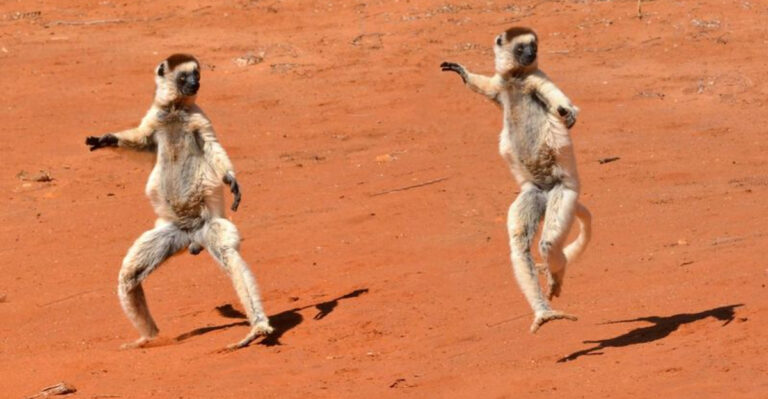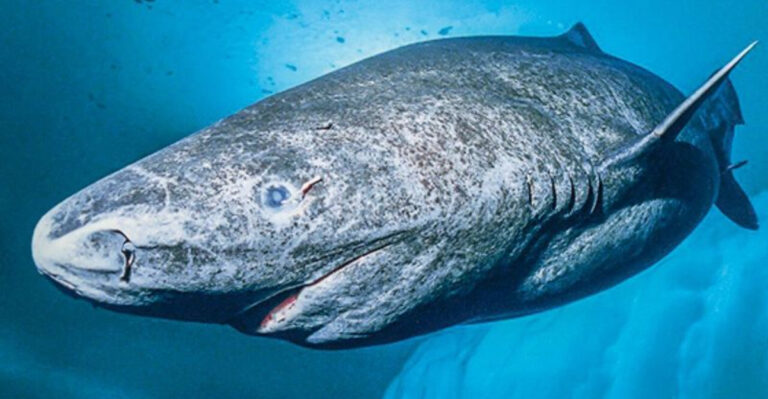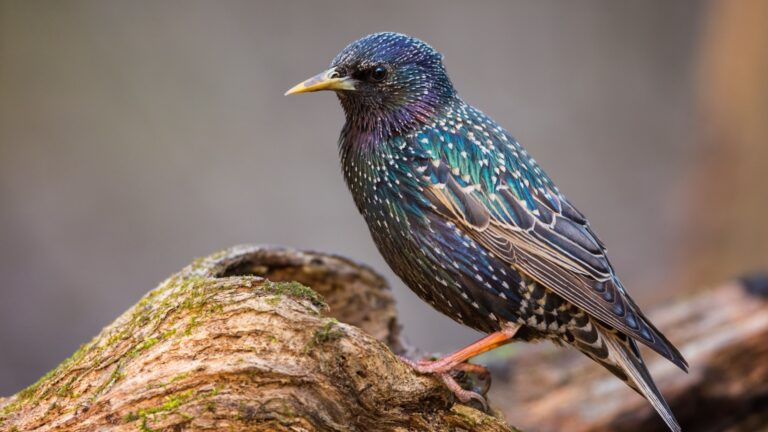These Are The 14 Smallest Frogs Ever Spotted In The U.S.

Frogs come in all shapes and sizes, but today, we’re focusing on the teeny-tiny wonders hopping around the United States. Whether you’re a frog enthusiast or just curious about these little hoppers, you’ll find these smallest frogs simply fascinating.
From the southeastern wetlands to the cooling shade of the Appalachian mountains, these petite amphibians are not just small but also uniquely captivating.
1. Monte Iberia Eleuth
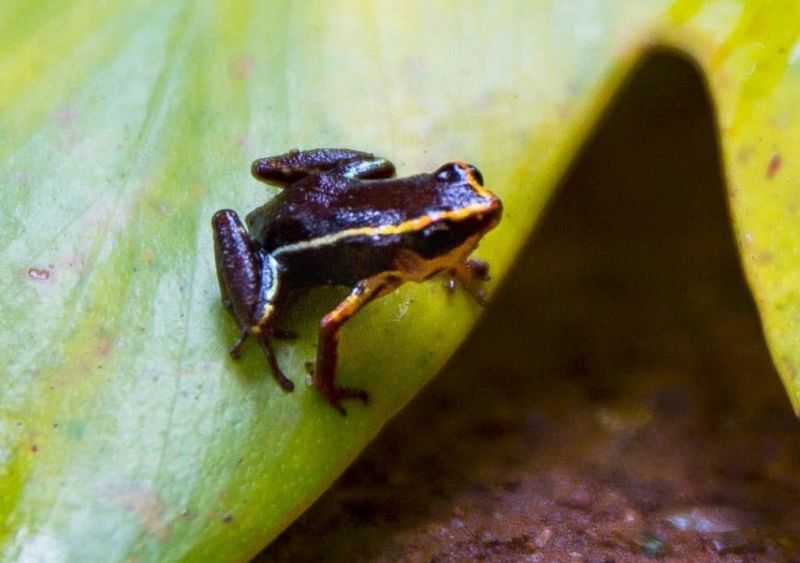
The Monte Iberia Eleuth is not just small—it’s remarkably tiny, measuring a mere 0.39 inches. This little frog holds the title for the smallest frog in the Northern Hemisphere.
Its home is the sunny state of Florida, where it stays well hidden among fallen leaves. Its dark brown skin is adorned with a delicate white-yellow stripe pattern near its head, making it a subtle beauty.
2. Eastern Cricket Frog
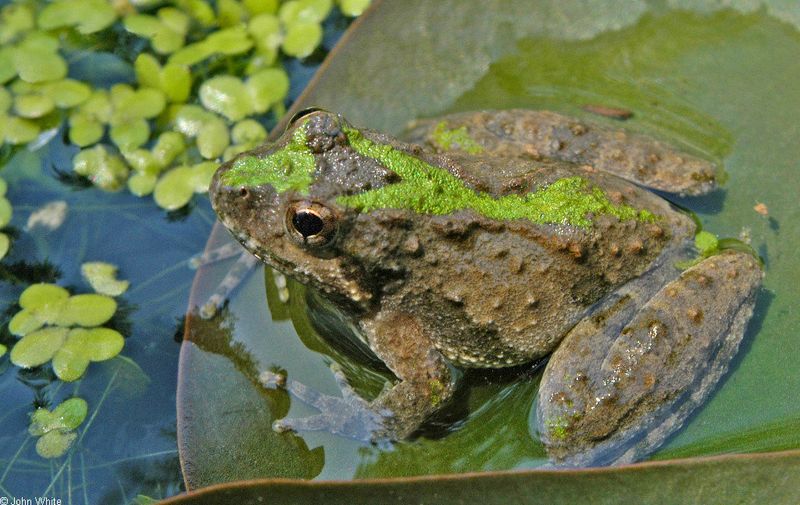
Chirping through the air like a cricket, the Eastern Cricket Frog is a remarkable sight. Reaching up to 1.5 inches, this frog is larger compared to others on our list but still considered small.
Found throughout the eastern U.S., it’s a master of camouflage. This frog displays an array of colors and patterns, making each encounter unique. Its call resembles that of a cricket, filling wetlands with a distinctive sound.
3. Spring Peeper
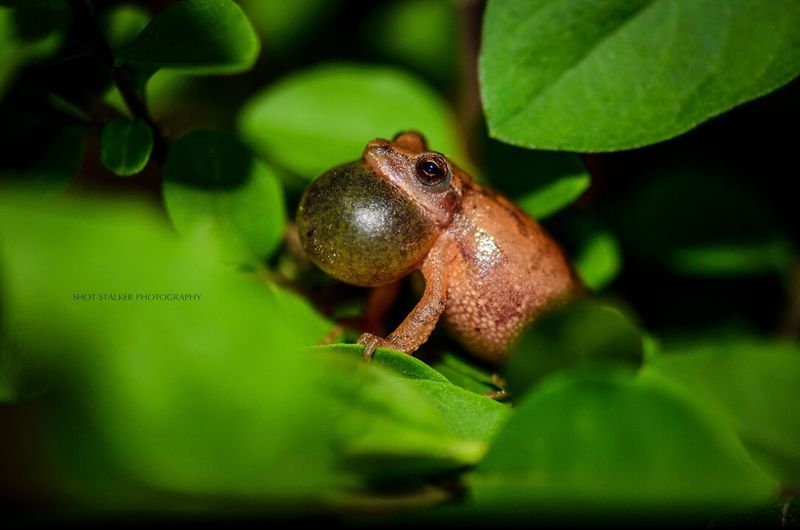
Picture the Spring Peeper, a small but vocal presence in the eastern U.S. woodlands. At just about 1 inch, these tiny creatures make themselves known with their high-pitched calls that signal the arrival of spring.
Their defining feature is an X-shaped mark on their back, which makes them easily identifiable. Often found on trees and shrubs, they blend seamlessly with their surroundings.
4. Southern Chorus Frog
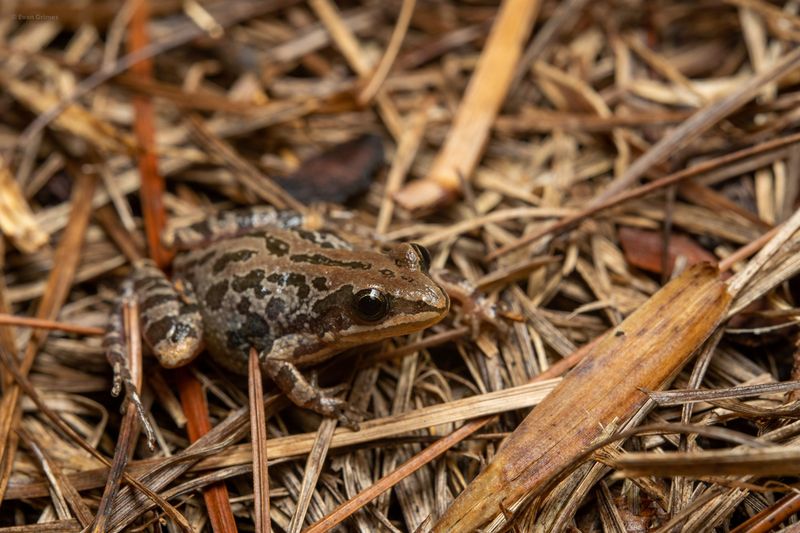
The Southern Chorus Frog is a small amphibian, reaching about 1 inch in length. This little frog makes its home in the southeastern U.S., where it thrives in the warmth and humidity of the region.
Characterized by dark stripes running from its snout through its eyes and down its sides, it possesses a charming and mysterious appearance.
Though small, its calls resonate loudly, contributing to the symphony of sounds in the swamps and marshes. Whether you spot one or just hear its call, the Southern Chorus Frog is a delightful presence in its habitat.
5. Western Chorus Frog

The Western Chorus Frog may be small, but its impact is anything but. At about 1 inch long, it inhabits the central U.S., where its calls fill the evening air.
This frog is easily recognized by the three dark stripes that adorn its back, often with a lighter-colored line in between. It prefers living in open fields and marshlands.
6. Little Grass Frog
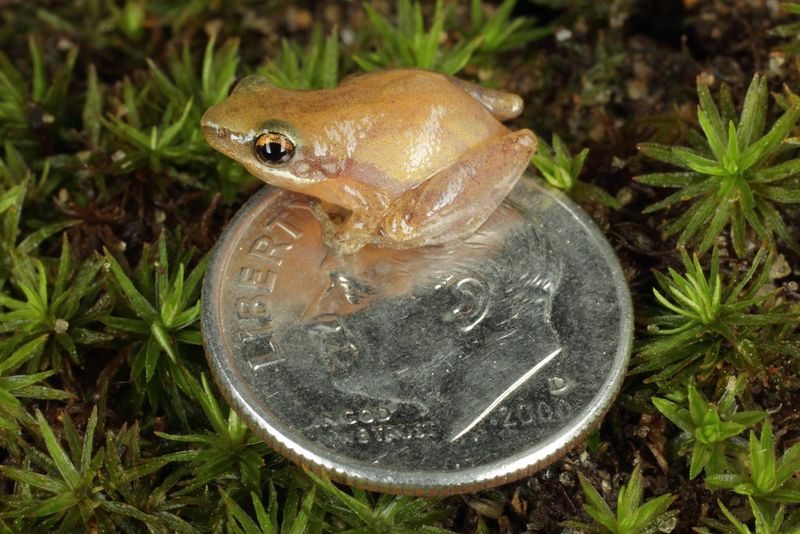
Meet the Little Grass Frog, a minuscule marvel of the U.S. amphibian world. At no more than 0.75 inches long, this frog is North America’s smallest.
Found in the lush wetlands of the southeastern U.S., it’s often seen hopping through grass and underbrush. Its pale brown body is complemented by striking dark stripes running through its eyes and along its sides. Despite its small size, it has a big presence in its natural habitat.
7. Northern Cricket Frog
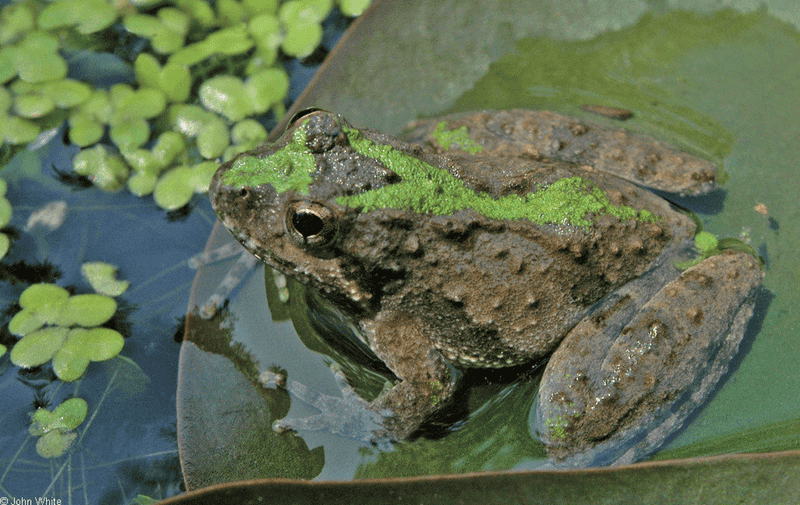
Meet the Northern Cricket Frog, a small but lively amphibian found in the northern U.S. At up to 1.5 inches, it’s known for its diverse coloration and variable patterns.
This frog’s cricket-like call is its signature sound, heard in the serene settings of ponds and streams. Its rhythmic calls echo through the region, marking its territory.
Despite its size, the Northern Cricket Frog plays a significant role in the ecosystem.
8. Barking Treefrog

The Barking Treefrog is a true character, vibrant and full of life. At up to 2 inches, it’s larger than some, but still tiny in the grand scheme of nature.
Found in the southeastern U.S., it’s easily recognized by its green or gray color, punctuated with dark spots. Its distinctive barking call sets it apart from other frogs, creating a unique melody.
9. Green Treefrog
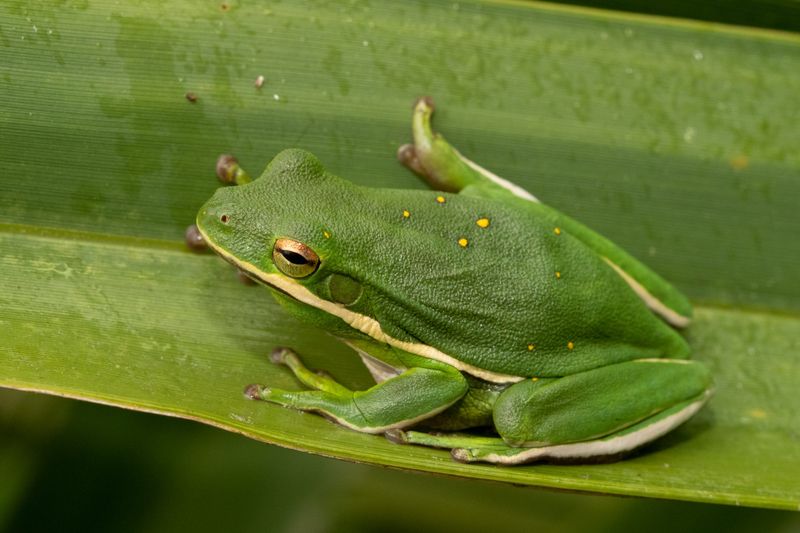
Imagine the Green Treefrog, a bright and lively resident of the southeastern U.S. This frog, measuring up to 2.5 inches, is known for its striking green shade.
A light stripe runs down its flanks, adding to its visual appeal. It’s a nocturnal creature, often heard calling at night, creating a soothing night-time symphony. Arboreal and agile, it finds its home among the leaves, thriving in its leafy habitat.
10. Copes Gray Treefrog
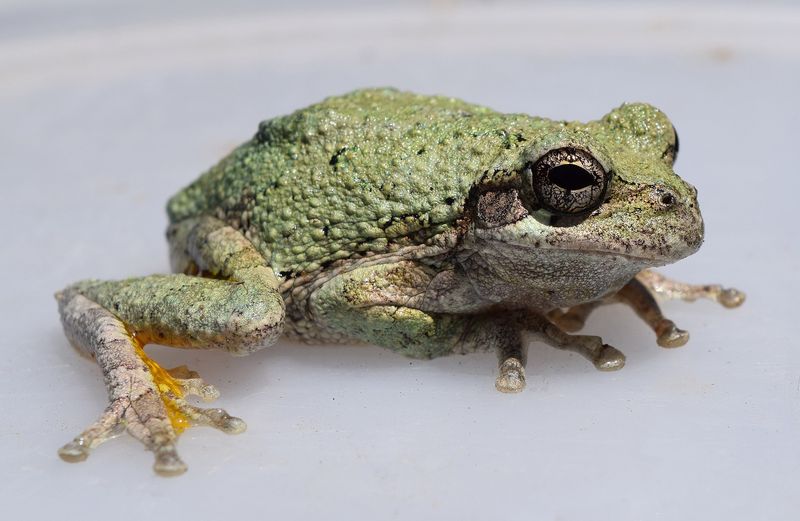
Copes Gray Treefrog brings a splash of variety to the eastern U.S. landscape. Reaching up to 2 inches, it has the ability to change its color from gray to green.
Often found resting on branches, its color variations help it blend seamlessly with its surroundings. The bright yellow or orange spots on its hind legs add an unexpected pop of color. This frog is a master of disguise and a unique member of its habitat.
11. Mountain Chorus Frog
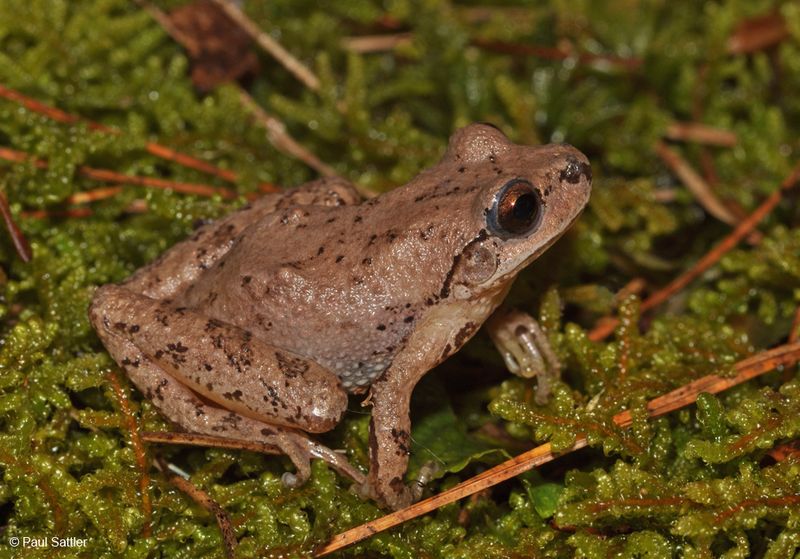
High in the Appalachian region, the Mountain Chorus Frog makes its humble home. At around 1 inch long, it’s a small frog with a loud voice.
Known for its distinctive dark stripe through the eye, this frog is a master of harmony, creating a symphony that resonates through the hills. Its presence is a testament to the rich biodiversity of the Appalachian mountains.
12. Upland Chorus Frog

The Upland Chorus Frog is a subtle yet significant inhabitant of the central U.S. At about 1 inch long, its small size is complemented by a loud, resonant call.
This frog is identifiable by the dark stripe running through its eye, giving it an intriguing appearance. Often found in grassy areas, it’s a master of hiding in plain sight.
13. Pine Woods Treefrog
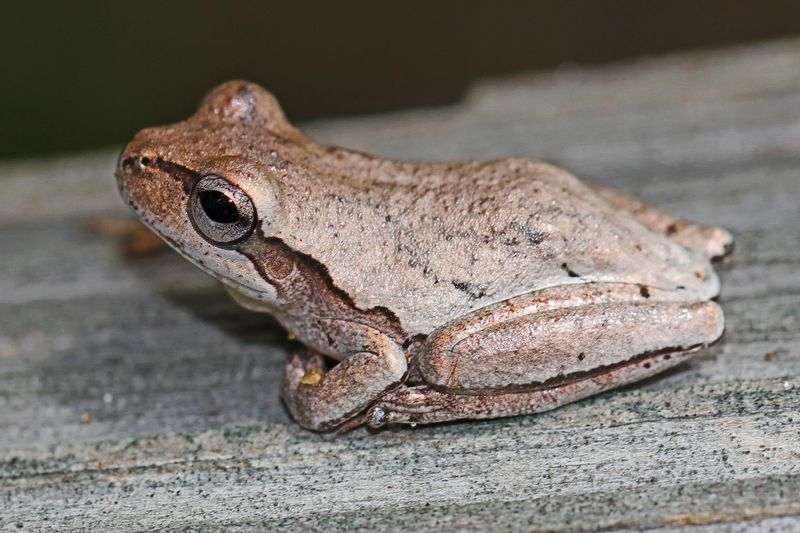
In the pine forests of the southeastern U.S., the Pine Woods Treefrog makes its presence known. At about 2 inches in length, this frog is often seen perched on branches.
Its gray or brown coloration, accented with a light stripe along the upper lip, allows it to blend effortlessly into the forested environment.
14. Squirrel Treefrog
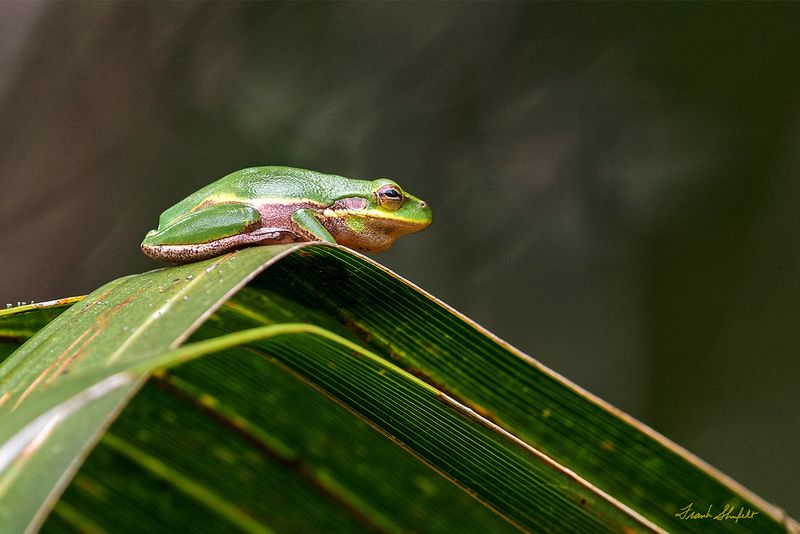
The Squirrel Treefrog is a lively inhabitant of the southeastern U.S. At up to 1.5 inches, its color varies from vivid green to earthy brown.
It often sports a light stripe along its upper lip, adding to its charm. Agile and curious, it’s frequently found among leaves and branches, hopping with vigor.


